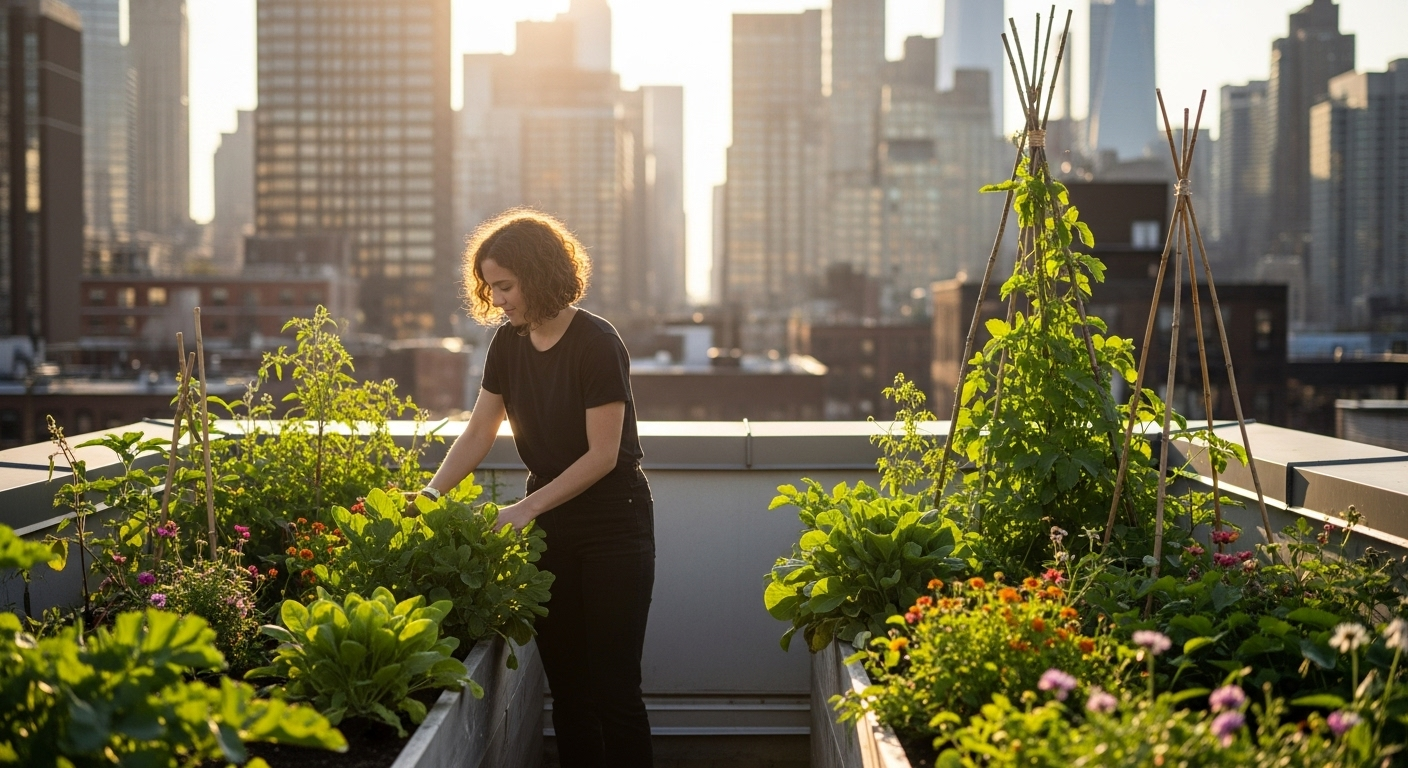Foraging Feasts: Urban Wild Edibles Revolution
Discover the hidden bounty in your own backyard as urban foraging takes root in cities worldwide. From dandelion greens to mulberries, learn how to identify, harvest, and prepare wild edibles growing right under your nose. Join the movement that's transforming concrete jungles into edible landscapes and reconnecting urbanites with nature's pantry.

Safety First: The Do’s and Don’ts of Urban Foraging
While urban foraging offers exciting culinary possibilities, it’s crucial to approach it with caution and knowledge. First and foremost, accurate plant identification is paramount. Mistaking a poisonous look-alike for an edible plant can have serious consequences. Invest in reliable field guides, join local foraging groups, or take classes from experienced foragers to build your identification skills. Always be certain of a plant’s identity before consuming it. Secondly, be aware of potential contamination sources in urban environments. Avoid foraging near busy roads, industrial areas, or places that may have been treated with pesticides. When in doubt, skip it. It’s also important to harvest responsibly and ethically. Never take more than you need, and avoid damaging plants or ecosystems. Some cities have regulations regarding foraging in public spaces, so familiarize yourself with local laws. Lastly, clean your finds thoroughly before consumption to remove any dirt, debris, or potential contaminants.
From Sidewalk to Table: Preparing Urban Wild Edibles
Once you’ve safely harvested your urban bounty, the culinary adventure begins. Many wild edibles can be prepared similarly to their cultivated counterparts, but some require specific techniques to maximize flavor and minimize bitterness. Dandelion greens, for example, can be blanched to reduce their bitter taste before being sautéed or added to salads. Wild garlic (also known as ramps) can be used in place of traditional garlic in many recipes, offering a more complex, earthy flavor. Mulberries and other wild berries make excellent jams, pies, or additions to smoothies. Edible flowers like violets or nasturtiums can add color and subtle flavors to salads or be used as garnishes. Some urban foragers even experiment with making wild herb-infused oils, vinegars, or liqueurs. The key is to start simple and gradually expand your repertoire as you become more familiar with different flavors and textures.
The Nutritional Powerhouse in Your Neighborhood
Urban wild edibles often pack a surprising nutritional punch. Many of these plants have higher concentrations of vitamins, minerals, and antioxidants compared to their cultivated counterparts. For instance, dandelion greens are rich in vitamins A, C, and K, as well as iron and calcium. Purslane, often considered a weed, is one of the best plant sources of omega-3 fatty acids. Wild berries typically contain more antioxidants than commercially grown varieties. Incorporating these nutrient-dense wild foods into your diet can contribute to overall health and wellbeing. Moreover, because these plants grow without human intervention, they’re free from pesticides and artificial fertilizers, making them an appealing option for those seeking organic produce. The act of foraging itself can also have health benefits, providing outdoor exercise and stress relief through connection with nature.
Building Community Through Urban Foraging
Urban foraging has the power to transform not just diets, but communities as well. As interest in wild edibles grows, so do opportunities for community engagement and education. Foraging walks and workshops bring together diverse groups of people, fostering connections and shared learning experiences. Some cities are embracing this trend by incorporating edible landscapes into urban planning, creating public food forests and community gardens that blend cultivated and wild plants. These spaces become hubs for education about local ecosystems, sustainable food systems, and traditional ecological knowledge. Urban foraging also encourages a sense of place and belonging, as people become more attuned to the seasonal rhythms and biodiversity of their local environment. By sharing knowledge and harvests, urban foragers are building resilient communities and food networks that exist outside of traditional agricultural systems.
Useful Tips & Facts:
• Always carry a reliable plant identification guide when foraging.
• Harvest no more than 10% of any wild plant population to ensure sustainability.
• Spring and early summer are often the best seasons for urban foraging.
• Some common urban edibles include dandelions, chickweed, and lamb’s quarters.
• Wild foods can contain up to 10 times more nutrients than their cultivated counterparts.
• Many cities offer foraging tours led by local experts.
• Always wash urban foraged foods thoroughly before consuming.
• Some plants, like nettles, require special handling or cooking to be edible.
Urban foraging represents a exciting shift in how we interact with our cities and our food systems. By rediscovering the edible landscape hidden in plain sight, we not only access fresh, local food but also reconnect with nature and our communities. As this movement grows, it has the potential to transform urban spaces, promote biodiversity, and create more resilient, sustainable cities. Whether you’re a curious beginner or a seasoned forager, the urban wild offers a world of culinary adventure waiting to be explored. So next time you walk through your neighborhood, take a closer look at the plants around you – your next meal might be growing right at your feet.





